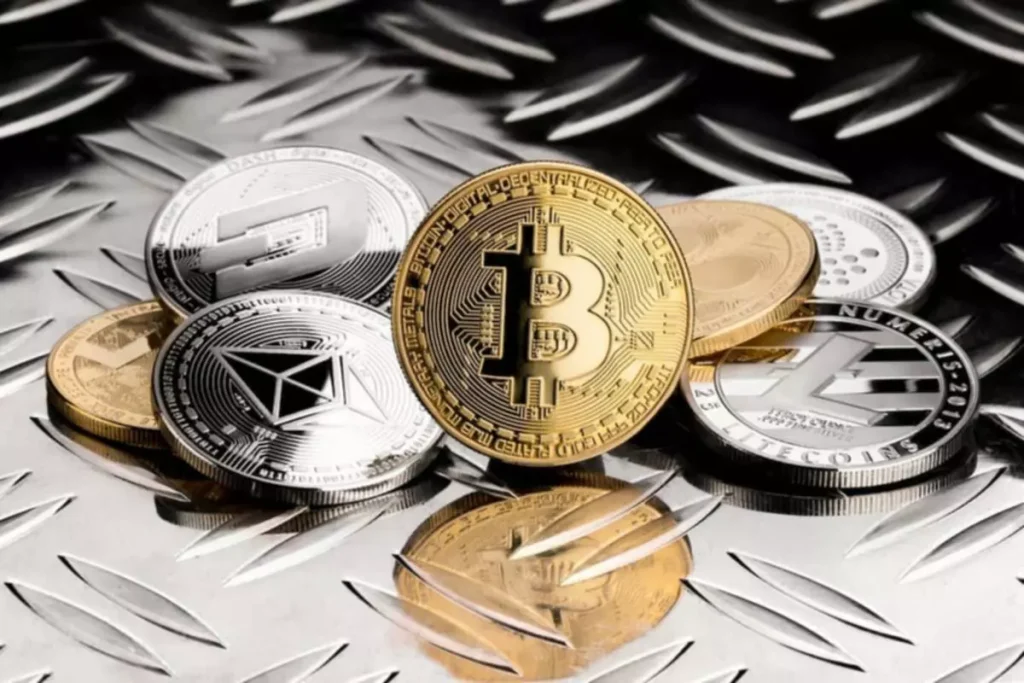Content
When presented with a Base58Check code, the decoding software will calculate the checksum of the data and compare it to the checksum included in the code. If the two do not match, that indicates that an error has been introduced and the Base58Check data is invalid. For example, this prevents a mistyped bitcoin address from being accepted by the wallet software as a valid destination, an error that would otherwise result in loss of funds. A public address or public key is a cryptographic code that allows a user to receive cryptocurrencies into his or her account. The public key coupled with the private key are significant tools required to ensure the security of your crypto assets.
In addition, this may vary depending on the network or blockchain where you send funds. The cryptocurrency wallet address is a string of characters used to send and receive cryptocurrency. In Chapter 1, we introduced Eugenia, a children’s charity director operating in the Philippines. Let’s say that Eugenia is organizing a bitcoin fundraising drive and wants to use a vanity bitcoin address to publicize the fundraising. Eugenia will create a vanity address that starts with “1Kids” to promote the children’s charity fundraiser. Let’s see how this vanity address will be created and what it means for the security of Eugenia’s charity.
Public Key Cryptography and Cryptocurrency
There may be restrictions in certain countries as to whom may acquire cryptocurrencies. Mt Pelerin does not offer services in relation to cryptocurrencies to US persons. This screen displays your secret phrase, which is the only way to access and restore your wallet and all its content. The other option is to access an existing address in case you already have one.

If the wallet is an older implementation and does not use compressed public keys, the private keys will only ever be exported as WIF . The goal here is to signal to the wallet importing these private keys whether it must search the blockchain for compressed or uncompressed public keys and addresses. —is as difficult as trying all possible values of k, i.e., a brute-force search. Before we demonstrate how to generate a public key from a private key, let’s look at elliptic curve cryptography in a bit more detail. Cryptocurrency is stored on a blockchain, which is a ledger consisting of blocks of transactions. Wallet addresses are how cryptocurrency is transferred from one account on the blockchain to another.
Creating a Bitcoin wallet is as easy as installing software on your mobile device or laptop/desktop. Make sure to choose a password that you will remember, what is a bitcoin address as there isn’t any „I forgot my password“ option for security reasons. Help.coinbase.com needs to review the security of your connection before proceeding.
Another common application of this solution is for cold-storage or hardware wallets. In that scenario, the extended private key can be stored on a paper wallet or hardware device , while the extended public key can be kept online. The user can create “receive” addresses at will, while the private keys are safely stored offline. To spend the funds, the user can use the extended private key on an offline signing bitcoin client or sign transactions on the hardware wallet device (e.g., Trezor). Figure 4-12 illustrates the mechanism for extending a parent public key to derive child public keys. If a bitcoin wallet is able to implement compressed public keys, it will use those in all transactions.
Top Reasons Why Your Bitcoin Transaction is Still Unconfirmed
Crypto transfers are irreversible and unauthorized activity can result in the loss of funds. By following the tips above, you can reduce the risk of loss due to account security issues. Unlike dollars, crypto can be divisible into very small amounts. A bitcoin, for example, can be divided into eight decimal places. When entering an amount of crypto to transfer, double check your decimal places to make sure you’re transferring the intended amount. When using your Robinhood QR code to receive funds, always make sure the address scanned matches the address shown in your app.
- You may find multiple networks or blockchains available for your cryptocurrency.
- A single leaked child private key, together with a parent chain code, reveals all the private keys of all the children.
- When you receive crypto, the generated address is tied to only your account.
- It is easy to receive a coin or a token in your Exodus wallet.
- The public address of your Wallet allows you to receive cryptocurrency from other wallets or external transactions.
- Both private and public keys can be represented in a number of different formats.
- Moreover, you can access them through any device connected to the internet.
To transfer from Crypto.com to a wallet, you´ll need to find and copy the crypto wallet address of the wallet you are sending your funds to. Then choose to withdraw or transfer your funds to this address. If you want to send cryptocurrency to a wallet, you will need a cryptocurrency wallet address to send your funds.
How do I receive crypto in Exodus?
Copy Your Crypto.com Wallet Address Once you have selected your network, you will be presented with your Crypto.com wallet address. Select a Network Some cryptos can be transferred on multiple networks or blockchains. If this is the case, you will have options under “Select Network“. To choose the correct network, you must check which network you send your tokens to. Finding your crypto wallet address on the crypto.com app is pretty simple, but these tasks can be confusing when you’re starting out. So, we have put together this beginner’s guide to help you find your crypto.com wallet address from the app, plus we also provide you with a few tips along the way.
The command simply reveals the private key that is already known to the wallet and which was generated by the getnewaddress command. A cryptocurrency wallet address is a string of letters and numbers that represent a virtual wallet that you can send and receive cryptocurrency through. You should NEVER, under any circumstances, share your private key with any other person. It’s best to store them in the most secure way possible (e.g. on a paper wallet or a hardware wallet). In cryptography, a public key and private key are both needed to access any encrypted information.

There are many types of this format, but the most common is known as “Wrapped Segwit”. Before you begin, please ensure that the asset you’re sending to your Trezor wallet is a supported asset and that you choose the correct network to send it on. Before you begin, please ensure that the asset you’re sending to your Exodus wallet is a supported asset and that you choose the correct network to send it on. You can follow this simple step-by-step guide if you want to find your crypto wallet address on the Crypto.com Exchange.
Checking if the site connection is secure
It’s also a good idea to compare the crypto address you’ve entered with the address you intend to use. One way to do this is to compare the first and last 5 characters of the addresses to make sure they match. When entering a wallet address, https://xcritical.com/ it’s recommended to copy and paste the address or scan a QR code. This also applies to coins that have similar names or symbols—sending ETC to an ETH address or sending BCH to a BSV address will result in the loss of those coins.

As you can see, finding your Crypto.com Wallet address is pretty straightforward. The most important thing is not to rush and make sure you choose the right wallet for the token you want to send or receive. This will help you ensure that you send cryptocurrencies via compatible networks to avoid loss.
Hardware Wallets
It is easy to receive a coin or a token in your Exodus wallet. Exodus supports over 100 assets, so use the search tool to find your favorite asset quickly. If you are depositing cryptocurrency into your Crypto.com account, it is essential to locate the address for the specific cryptocurrency that is being sent. Select “Deposit” & “Crypto” From the top of the home screen, select “Deposit“, then choose “Crypto” to deposit crypto from other networks. Instead, they can be kept in an file, which can be saved anywhere and stored offline.
Paper wallets are created by downloading a software package, then running the software to generate a public/private key pair which you print out on a piece of paper. Having created a paper wallet, you can send any amount of bitcoin to the wallet address. To spend it, you use the private key written on the paper to sign the spend transaction. In the following sections we will look at advanced forms of keys and addresses, such as encrypted private keys, script and multisignature addresses, vanity addresses, and paper wallets. As a best practice, the level-1 children of the master keys are always derived through the hardened derivation, to prevent compromise of the master keys.
Similar to a bank account number, you give this crypto receive address to another person from whom you wish to receive a payment. You can think of it as an account number if you were comparing it to a bank account, and within that bank, you have multiple accounts for multiple currencies . In a similar fashion, you can have a wallet address for BTC , ETH and any other type of cryptocurrency.
Implementing Keys and Addresses in Python
Use a cryptographically secure pseudo-random number generator with a seed from a source of sufficient entropy. Study the documentation of the random number generator library you choose to make sure it is cryptographically secure. Correct implementation of the CSPRNG is critical to the security of the keys. Although blockchain wallets and wallet addresses may seem complicated, they’re easier to understand by going over how a wallet address works from start to finish.
How to Find Your Crypto Wallet Address on Crypto.com App
Although anyone can send bitcoin to a “1” address, that bitcoin can only be spent by presenting the corresponding private key signature and public key hash. In bitcoin, we use public key cryptography to create a key pair that controls access to bitcoins. The key pair consists of a private key and—derived from it—a unique public key.
The dumpprivkey command opens the wallet and extracts the private key that was generated by the getnewaddress command. It is not otherwise possible for bitcoind to know the private key from the public key, unless they are both stored in the wallet. The format of a wallet address depends on the cryptocurrency.
Coordinate and uncompress the public key to the full coordinates of the point. To visualize multiplication of a point with an integer, we will use the simpler elliptic curve over the real numbers—remember, the math is the same. Our goal is to find the multiple kG of the generator point G.
To explain how, we need to go over a few other elements of blockchain wallets. However, every crypto transaction incurs a network fee—sometimes called a miner fee or gas fee. The amount of the fee depends on the coin and how many other transactions are happening on the coin’s network. You’ll see what the network fee is before you finalize a send transaction. Robinhood doesn’t get any of the network fee—100% of that fee is collected by the crypto network that facilitates the transfer. We’ll estimate the network fee and add it to the amount you want to send, except when using the “Send All” function, in which case the fee will be deducted from the total amount sent.